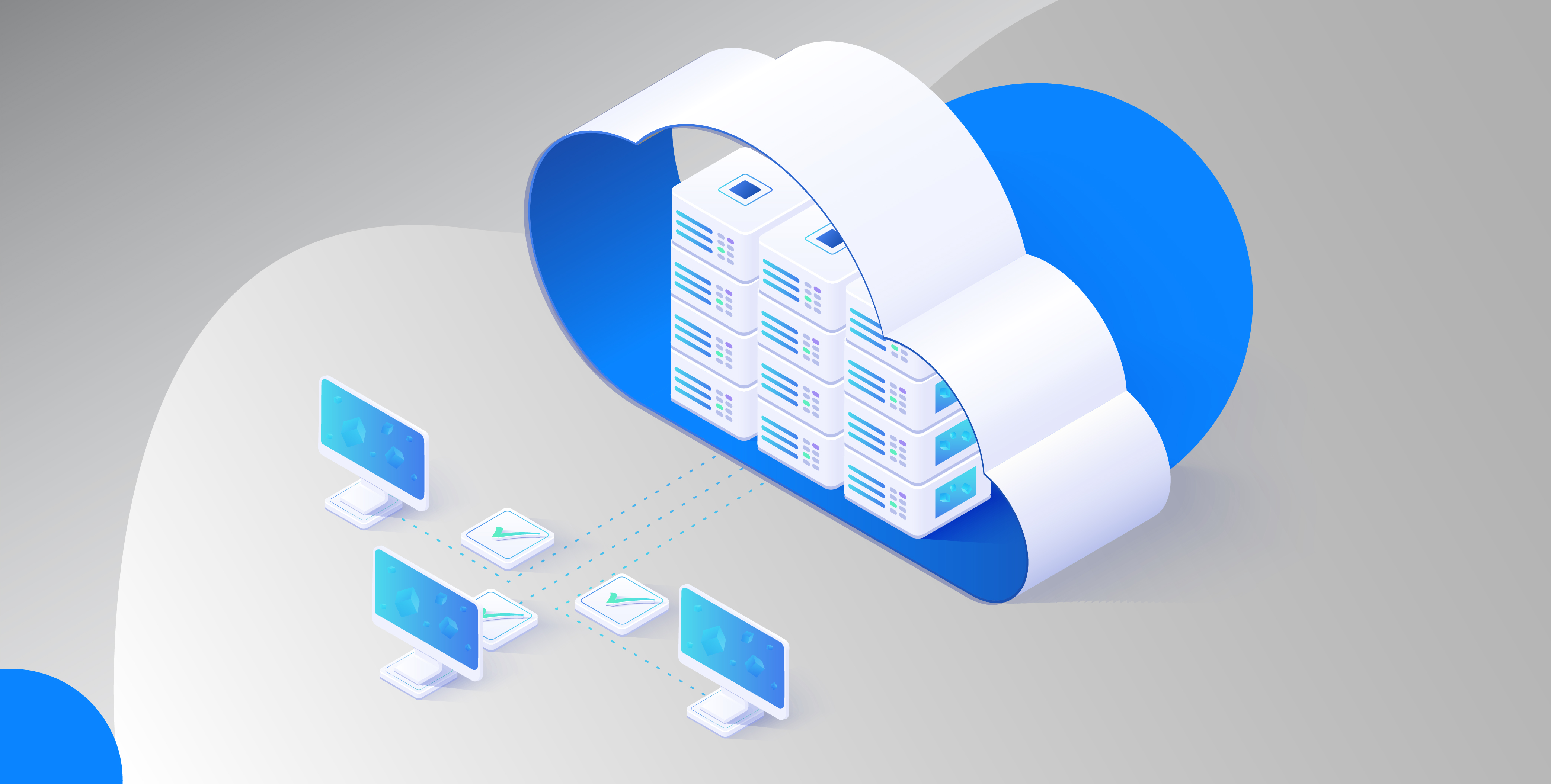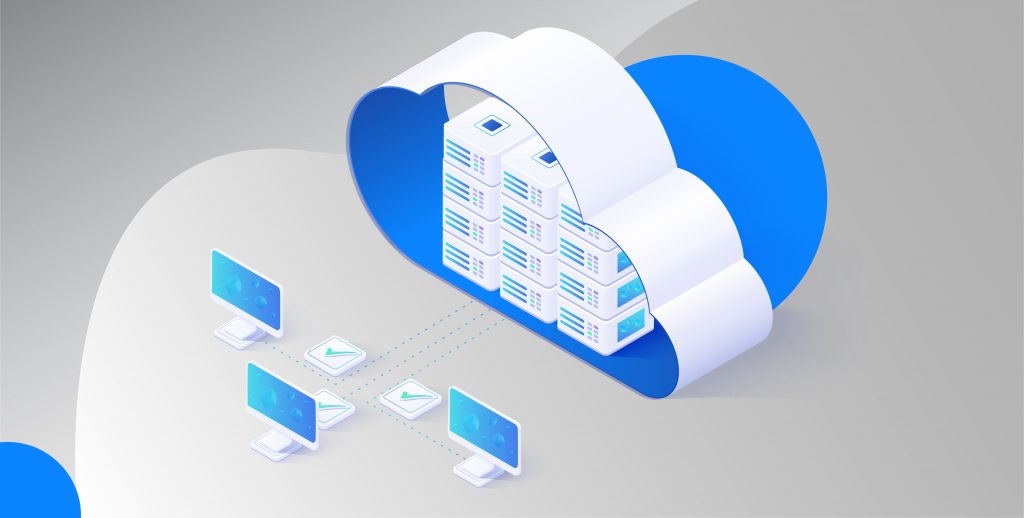Have heard much about multicloud but have some fears regarding the reliability of such approach? Read our article on the topic and get all the necessary details to clear up your doubts. Find what stands behind the term, what are the benefits of multicloud, why you should give it a go and much more below.
written by:
Anastasia Borodinets
Have heard much about multicloud but have some fears regarding the reliability of such approach? Read our article on the topic and get all the necessary details to clear up your doubts. Find what stands behind the term, what are the benefits of multicloud, why you should give it a go and much more below.
Eighty one percent of public cloud users take advantage of two or more cloud providers nowadays, Gartner says in its report. At the same time, according to IHS Markit Ltd., companies on average use eight cloud providers in their daily business activities. What drives such vigorous industry growth and sparks interest to multicloud? Go on reading for the details.
What is multicloud?
For your better comprehension of the issue, let’s start from the very definition and then move consistently to the depths of multicloud theory. Additionally, later on we’ll compare multicloud approach with its closest alternative – hybrid cloud – to help you see the distinction between the two and take a more informed business decision. To wind up, we’ll go through the multicloud benefits and review some of its drawbacks in the conclusion. Let’s go then!
Multicloud is a cloud approach made up of more than 1 cloud service, from more than 1 cloud vendor—public or private, RedHat explains. Simply speaking, you’re buying several cloud services from two or more providers. The approach has received wide acceptance as a countermeasure to fight numerous negative factors typical for using cloud services from a single cloud provider – risk of vendor lock-in, lack of transparency or proper data governance, among others.
Hybrid or multicloud?
Truth be told, these two architectural cloud approaches are often confused, for in reality both hybrid and multicloud are simply a massive number of servers that are located somewhere out there. Nevertheless, to conduct your business well, you surely must see the difference between them, as sticking to a hybrid or a multicloud strategy may give sometimes slightly and sometimes completely reverse results.
So, if you choose multicloud option, you, as we’ve mentioned before, enjoy multiple services from multiple (or at least two) cloud vendors. What in case of a hybrid strategy?
Hybrid cloud is a mixture of public and private environments. Despite the fact that it is a mixture, two types of clouds – private and public – are still interconnected. It means, some critical part of an application can be located in the private cloud, while the rest lies in the public one. Yet, to function, the app requires both clouds to work together through a kind of a tunnel that connects them. What makes hybrid approach even more valuable is scalability that cloud capabilities offer. Let’s say, what would you do if or when your e-commerce app starts glitching at pick loads, during holidays, for example. Scale it up, of course, for clouds offer almost unlimited scalability opportunities.
Where the distinction between multicloud and hybrid cloud approach lies then? Multicloud approach doesn’t imply interoperability or importability of the workloads, which is required in the case of a hybrid approach. Instead, its value is in high degree of automation, multiple first-class services and no vendor lock-in. The latter, by the way, is typical for the hybrid approach too.
Why try out multicloud?
So, now, as we’ve learned the difference between hybrid and multicloud, let’s have an overview of the multicloud benefits. Let’s study the reasons behind multicloud adoption along with some mutlicloud drawbacks you’re probably going to face.
Why try out multicloud then?
-
To avoid vendor lock-in
The first and the most widely accepted reason behind multicloud adoption is risk of vendor lock-in. The issue is nowhere new and was already a problem back in the previous century. “Public administrations have been very much concerned since the 1980s about the need of avoiding vendor lock-in when procuring themselves with information technology (IT) infrastructure”, Bianca Sjoerdstra cites in Dealing with Vendor Lock-in, her academic paper devoted to the matter. Actually, public administrations indeed had every reason to be so. Simply imagine what would happen if the five biggest cloud providers (AWS, Azure, Google, Alibaba, IBM) applied their best efforts to retain every client and demonstrate higher revenues year in year out? The battle would affect the clients the most.
The thing is, the core idea about vendor lock-in is to make it difficult for the client to shift to another vendor. The vendor can achieve it, for example, through striking incompatibility and low interoperability of their products if applied together with the competitors’ solutions. To make things worse, the cloud vendors can take every precaution to make relocation as expensive and troublesome as possible to deter the client from moving. Thus, even in case of a significant price change it would be still more feasible for the client to stay than pack their things and move in with another vendor.
This actually what used to happen not so long ago in the market. Hopefully, things are changing now.
Are the cloud vendors happy themselves about the new shaping trend? Obviously, not, but given that even AWS can now be easily paired up with Azure, its long time rival, they are not going or simply unable to fight it either.
-
To take advantage of best-of-breed services
The truth is, all the leading cloud providers offer basically the same services with few variations in latency, redundancy, scale-up or control opportunities (check out Azure and AWS comparison here), while only specific services make the difference and distinguish them from the crowd. Multicloud allows you to actually make use of exactly these distinguishing services, and thus take the best from several vendors and achieve more than if you were bound to a single market player.
Surely, few of us will ever need all of 600+ of Azure services, for instance. However, the so-called nine knights of Azure are definitely worth giving a try. At the same time, AWS also has its best and brightest, among which S3, EC2 and AWS Lambda enjoy especial popularity (see the full list of AWS best here). So, why not make a killing combination of the best alternatives available in the market! Go give it a go!
-
To enjoy ultimate automation
Multicloud enables ultimate automation and reliable management of your applications. This is becoming relatively easy in the age of DevOps, and DevOps services are now available from almost every cloud provider. Why not combine their strengths to serve your purposes?
To help you get the best of DevOps, all top cloud vendors have Kubernetes clusters in place. So, if you choose to combine various services from two or more cloud vendors, Kubernetes will ensure ultimate automation and fault-free orchestration of your applications regardless the platform of choice.
Wrapping it up
Multicloud approach isn’t a silver bullet, but it does remove many operational barriers for those who’s not afraid of innovations and can handle them properly. It still has some disadvantages. Michael Warrilow, VP Analyst, Gartner, mentions at least substantial cost of getting services from multiple cloud vendors. Additionally, multicloud requires high level of expertise the way any innovative technology does. Same thing refers to Kubernetes and DevOps – technologies massively used by multicloud adopters - as the results that these technologies yield depend exactly on the knowledge of the people that use them.
Furthermore, to make the best out of multicloud, DevOps and Kubernetes, you’ll need to rearchitect your legacy systems and dig well into microservices and containerization, if you haven’t done this yet. Almost all top-notch applications nowadays are characterized by modular structure and use exactly such technologies as microservices and containers to achieve their incredible performance.
No doubt, to achieve excellence you’ll have to work hard. But isn’t it the right time for a leap of faith? With all the tremendous solutions existing now, your shift from legacy on-prem systems to multicloud can be as trouble-free as it could have ever been. Why not then?
Need more on cloud/multicloud adoption? Contact our Support team or visit our website for the details on our cloud migration projects, best practices and recommendations.

Contacts
Feel free to get in touch with us! Use this contact form for an ASAP response.
Call us at +44 151 528 8015
E-mail us at request@qulix.com






